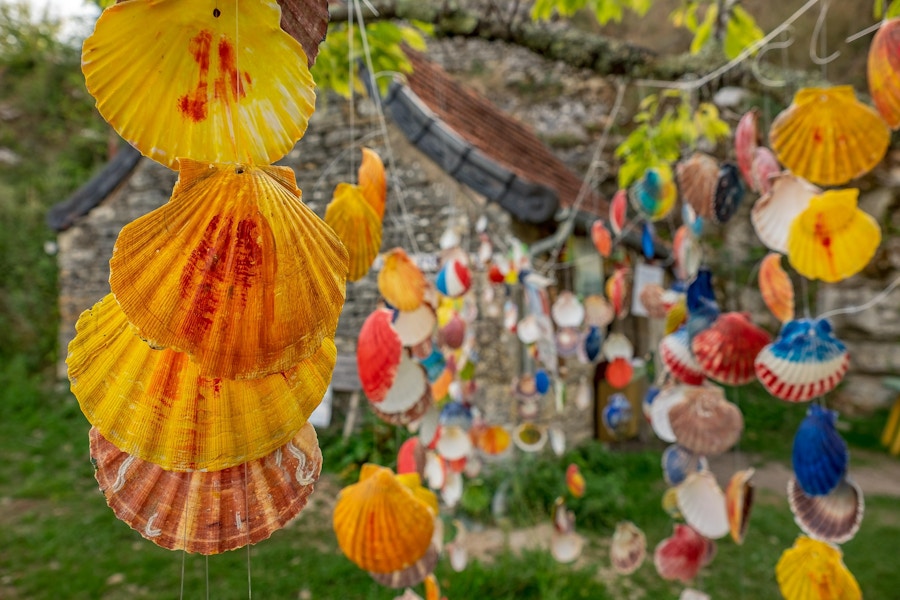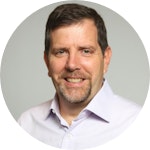Maybe I shouldn’t have been surprised that almost nothing went as planned when I walked the Camino de Santiago this summer. After all, the Camino is a pilgrimage. It’s not a packaged holiday offered by Disney.
The idea of walking the Camino came from my son’s AP Spanish class. Duncan casually asked me a couple of years ago if I’d be willing to walk the Camino with him “someday.” Someday was a long time away, and I was honestly just glad my 17-year-old son wanted to spend time with me anywhere, so the response was simple.
“Sure!” followed a few moments later by, “What’s the Camino?”
I hadn’t learned about the Camino in French class way back in the 20th century.
If you’re not familiar with it, the Camino is an ancient pilgrimage route across Spain to the city of Santiago de Compostela. Pilgrims began walking the route more than a thousand years ago to visit the cathedral where tradition says the remains of St. James rest. Today, thousands of modern-day pilgrims traipse across Spain for any number of reasons, religious and otherwise.
Over the centuries, several different routes have emerged. When we finally got down to planning our trip several years after he first suggested it, Duncan and I selected the El Norte route. This 800-kilometer (500-mile) route starts on the French border in Irun and runs across the northern coast of Spain until dipping south to Santiago about 180 km from the end of the walk. Along the way, the path covers a wide variety of terrains: seaside cliffs, country lanes, ancient villages, modern cities, and plenty of hills.
Because of time constraints at the beginning and end of our summers, Duncan and I planned to modify our Camino by starting 300 km in. Flying to Bilbao, we would take a bus to a little village on the coast approximately 500 km from Santiago and jump into the walk. We planned to walk about 25 km/15 m per day, six days a week, arriving in Santiago four weeks later.
It didn’t take long for our carefully laid plans to blow up on us. Airline staffing problems caused by the Covid hangover led to an unexpected stay in Frankfurt and a lost day of walking. It was the first of many lessons on a key character requirement for pilgrims: resilience. Or as my late dad would have said, “When life gives you lemons, make lemonade.”
Little did we know that a one-day delay would be the least of our problems. Four days and 100 km into our pilgrimage, I started feeling some discomfort in my right knee any time we had to climb a hill. I’ve had knee pain before. I’m a lifelong runner and hiker, so I didn’t panic. But I noticed it and filed it away in the back of my mind.
It was about this time that I noticed a pesky thought jabbering away in those back corners of my awarenessss. Duncan and I had adopted the practice of walking the first hour in silence. This is both a good spiritual practice and it relieves two dudes from the pressure of having to fill every waking moment with conversation. That day, I had suggested we do an examen of consciousness. If you’re not familiar with the examen, don’t let the funny name spook you. In this version of the ancient practice, we simply notice what we’ve been feeling over the past day and what that tiny voice in our head has been saying, the chatter we all have whether we know it or not.
My friend and colleague, Nate Foster, had scheduled me to be a guest on his podcast to talk about my experience on the Camino.
“I sure hope this knee problem doesn’t make us adjust our schedule or route,” I caught myself thinking. “Otherwise that will be a pretty embarrassing interview.” In that moment, I realized I had been telling myself the story that my Camino story ought to be a heroic tale of a dad and a son walking across Spain, bonding together while getting closer to God. It ought to be impressive! And I, of all people, should not be the weakest link on the team.
I’m not one who has claimed to hear God speaking very often in my life. But as we walked in silence and the realization of my self-talk hit me, I sensed a little nudge.
“You don’t have to carry the burden of impressing people. That’s just pride. How about if you put it down?”
It was a gentle voice, almost playful, more of an invitation than a demand. What it left unsaid, but strongly implied, was that I’m allowed to keep carrying that load if I want to. But why would I? Why not let Him do the heavy lifting?
Little did I know that this would be the first of several invitations into humility that I would receive over the coming weeks. My knee discomfort continued the next day, to the point where I consulted my US-based physical therapist about whether I was doing permanent damage by continuing. Reassured by my therapist’s advice, Duncan and I decided to burn several rest days, invest them in rest/rehab, and shorten our itinerary so that we could finish in Santiago within our time limit.
If I didn’t like these concessions to my knee pain, I truly hated what eventually happened. Three weeks into our planned 4 ½ week adventure, in the middle of the little village of Baamonde, my manageable knee pain quite suddenly became unbearable.
I sat for 30 minutes outside a truck stop with a precious bag of ice pressed to my knee before accepting the inevitable. My Camino was over as a walking pilgrimage. I would become a cheerleader for Duncan as he walked the final 80km solo.
But my pilgrimage wasn’t over, at least not the important part. As I sat at a hostel watching Duncan walk away, another nudge: “Release your expectations. Enjoy the now.”
That’s when I realized that this whole pilgrimage — for me — was a journey into humility. It was an opportunity to acknowledge, in the words of my patron saint, Clint Eastwood, that “sometimes a man’s got to know his limitations.” That doing so early can relieve us of unnecessary burdens and unnecessary pain. That we are ultimately dependent and small.
As I was grieving my need to abandon the walk, Gretchen sent me a picture of a post-it note we have on our bathroom mirror at home. It’s another little message I feel like I’ve heard from God over the past few months. “Trust me. Act as if I’m going to do something wonderful.”
That’s the humble life of a pilgrim. It’s a life of trust and dependence. That’s the life I want.
Related Podcast
Photo by Burkard Meyendriesch on Unsplash
Text First Published August 2022 · Last Featured on Renovare.org August 2022


